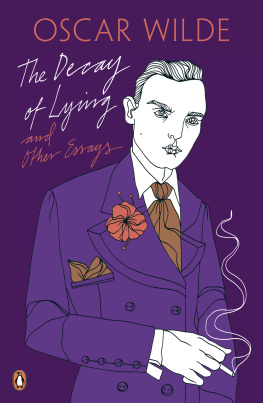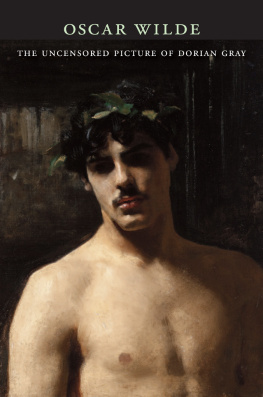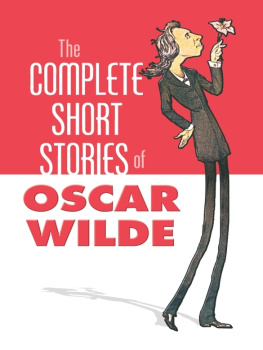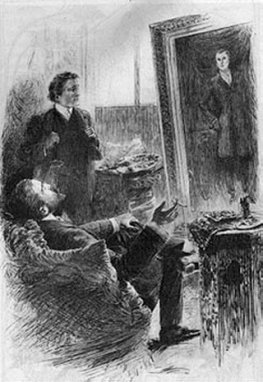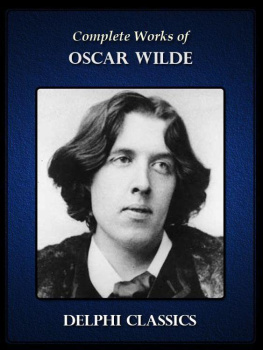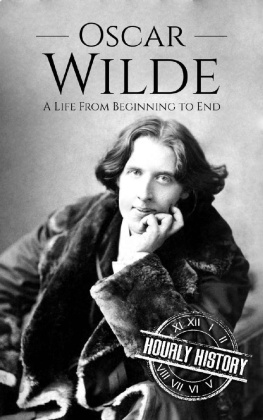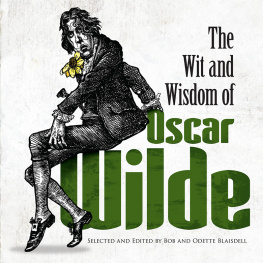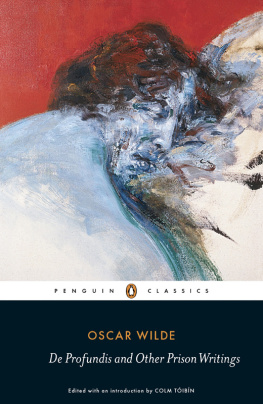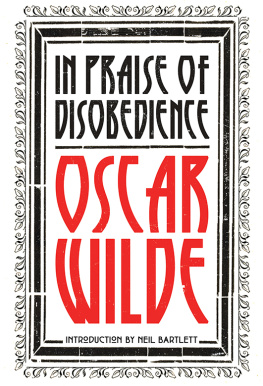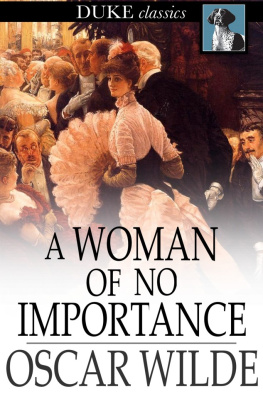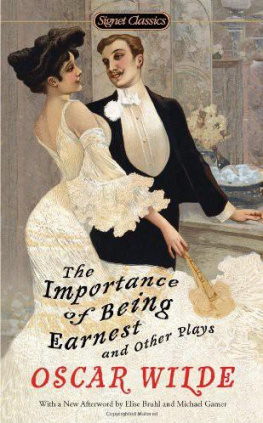Oscar Wilde - The Picture of Dorian Gray (Penguin Classics)
Here you can read online Oscar Wilde - The Picture of Dorian Gray (Penguin Classics) full text of the book (entire story) in english for free. Download pdf and epub, get meaning, cover and reviews about this ebook. year: 2003, publisher: Penguin Classics, genre: Detective and thriller. Description of the work, (preface) as well as reviews are available. Best literature library LitArk.com created for fans of good reading and offers a wide selection of genres:
Romance novel
Science fiction
Adventure
Detective
Science
History
Home and family
Prose
Art
Politics
Computer
Non-fiction
Religion
Business
Children
Humor
Choose a favorite category and find really read worthwhile books. Enjoy immersion in the world of imagination, feel the emotions of the characters or learn something new for yourself, make an fascinating discovery.

- Book:The Picture of Dorian Gray (Penguin Classics)
- Author:
- Publisher:Penguin Classics
- Genre:
- Year:2003
- Rating:4 / 5
- Favourites:Add to favourites
- Your mark:
- 80
- 1
- 2
- 3
- 4
- 5
The Picture of Dorian Gray (Penguin Classics): summary, description and annotation
We offer to read an annotation, description, summary or preface (depends on what the author of the book "The Picture of Dorian Gray (Penguin Classics)" wrote himself). If you haven't found the necessary information about the book — write in the comments, we will try to find it.
The Picture of Dorian Gray (Penguin Classics) — read online for free the complete book (whole text) full work
Below is the text of the book, divided by pages. System saving the place of the last page read, allows you to conveniently read the book "The Picture of Dorian Gray (Penguin Classics)" online for free, without having to search again every time where you left off. Put a bookmark, and you can go to the page where you finished reading at any time.
Font size:
Interval:
Bookmark:

THE PICTURE OF DORIAN GRAY
OSCAR FINGAL OFLAHERTIE WILLS WILDE was born in Dublin in 1854, the son of an eminent eye-surgeon and a nationalist poetess who wrote under the pseudonym of Speranza. He went to Trinity College, Dublin, and then to Magdalen College, Oxford, where he began to propagandize the new Aesthetic (or Art for Arts Sake) Movement. Despite gaining a first and winning the Newdigate Prize for Poetry, Wilde failed to obtain an Oxford scholarship, and was forced to earn a living by lecturing and writing for periodicals. He published a largely unsuccessful volume of poems in 1881 and in the next year undertook a lecture tour of the United States in order to promote the DOyly Carte production of Gilbert and Sullivans comic opera, Patience. After his marriage to Constance Lloyd in 1884, he tried to establish himself as a writer, but with little initial success. However, his three volumes of short fiction, The Happy Prince (1888), Lord Arthur Saviles Crime (1891) and A House of Pomegranates (1891), together with his only novel, The Picture of Dorian Gray (1891), gradually won him a reputation confirmed and enhanced by the phenomenal success of his society comedies Lady Windermeres Fan, A Woman of No Importance, An Ideal Husband and The Importance of Being Earnest, all performed on the West End stage between 1892 and 1895.
Success, however, was short-lived. In 1891 Wilde had met and fallen extravagantly in love with Lord Alfred Douglas. In 1895, when his success as a dramatist was at its height, Wilde brought an unsuccessful libel action against Douglass father, the Marquess of Queensberry. Wilde lost the case and two trials later was sentenced to two years imprisonment for acts of gross indecency. As a result of this experience he wrote The Ballad of Reading Gaol. He was released from prison in 1897 and went into an immediate self-imposed exile on the Continent. He died in Paris in ignominy in 1900.
ROBERT MIGHALL completed a Ph.D. on Gothic fiction and Victorian medico-legal science at the University of Wales, and then spent three years as a post-doctoral fellow at Merton College, University of Oxford. In 1997 he became the editor of Penguin Classics; he now works as a consultant and occasional writer. His publications include an edition of Oscar Wildes poems for Everyman Paperbacks, a study of Victorian Gothic fiction for Oxford University Press (1999) and the Penguin Classics edition of Robert Louis Stevensons The Strange Case of Doctor Jekyll and Mr Hyde and Other Tales of Terror. He is a Fellow of the Royal Society of Arts. He lives in London.
OSCAR WILDE
The Picture of Dorian Gray
Edited with an Introduction and Notes by
ROBERT MIGHALL
PENGUIN BOOKS
PENGUIN BOOKS
Published by the Penguin Group
Penguin Books Ltd, 80 Strand, London, WC2R 0RL, England
Penguin Putnam Inc., 375 Hudson Street, New York, New York 10014, USA
Penguin Books Australia Ltd, 250 Camberwell Road, Camberwell, Victoria 3124, Australia
Penguin Books Canada Ltd, 10 Alcorn Avenue, Toronto, Ontario, Canada M4V 3B2
Penguin Books India (P) Ltd, 11 Community Centre, Panchsheel Park, New Delhi 110 017, India
Penguin Books (NZ) Ltd, Cnr Rosedale and Airborne Roads Albany, Auckland, New Zealand
Penguin Books (South Africa) (Pty) Ltd, 24 Sturdee Avenue, Rosebank 2196, South Africa
Penguin Books Ltd, Registered Offices: 80 Strand, London, WC2R 0RL, England
www.penguin.com
First published 1891
Published in Penguin Classics 2000
Reprinted with minor revisions 2003
Introduction and Notes copyright Robert Mighall, 2000
Appendix (Introduction to the First Penguin Classics Edition)
copyright Peter Ackroyd, 1985
All rights reserved
The moral right of the editor has been asserted
Except in the United States of America, this book is sold subject to the condition that it shall not, by way of trade or otherwise, be lent, re-sold, hired out, or otherwise circulated without the publishers prior consent in any form of binding or cover other than that in which it is published and without a similar condition including this condition being imposed on the subsequent purchaser
9780141442518
APPENDIX 1 Selected Contemporary Reviews
of The Picture of Dorian Gray
I would like to thank the very helpful staff at the William Andrews Clark Memorial Library, Los Angeles, California, for letting me consult the typescript of the Lippincotts edition. A number of experts and friends have shared their expertise with me. My thanks to Owen Dudley Edwards, who I have no doubt relished the opportunity to edit his editor; to Barry Milligan and Matthew Sweet for advice on the opium passages; to Linda Dowling, Lawrence Normand, Merlin Holland, Bill Bynum, Sonia Massai and Patricia Ingham for clues here and there; and thanks to Laura Barber for some good ideas and wonderful assistance over the years. Thanks to Helen and Phil, and John and Jeremy at the outset, and to Michele at the Californian conclusion.
(New readers are advised that this introduction makes the detail of the plot explicit.)
On 20 June 1890 the Philadelphian Lippincotts Monthly Magazine published Oscar Wildes The Picture of Dorian Gray as the lead story for its July number. Wilde revised and enlarged this, his first and only novel, for appearance in book form the following April. Hitherto the thirty-five-year-old author had published a book of poems (1881; largely ignored or ridiculed), had had one play produced (unsuccessfully, in New York in 1883), published a book of fairy tales (1888; on the whole well received), and had published some essays and stories in literaryjournals. Wilde had reviewed many novels, and discoursed on the art of the novelist in The Decay of Lying; now was his chance to practise what he had been preaching, and to fulfil the great potential his profile had promised when he graduated from Oxford and set about promoting himself in Londons literary society. The Picture of Dorian Gray, published in the first year of the decade that would see him feted as the most successful society playwright of his day, and then pilloried as the most infamous sexual outlaw of the time, was his first significant and successful major work of art.
Characteristically, this was a succs descandale. His novel provoked, at least in Britain, an outraged response from many reviewers, providing a foretaste of the treatment he would receive five years later when what some believed they had found represented in Dorian Gray (outlawed passions and unspeakable acts) were revealed to be part of its authors life. Indeed, Wildes novel, or at least the more candid first version, was used by opposing counsel in the first two of his three trials in an attempt to prove that he was guilty of a certain tendency believed to be represented in Dorian Gray. In 1890 W. E. Henleys Scots Observer thundered:
The story which deals with matters only fitted for the Criminal Investigation Department or a hearing in camera is discreditable alike to author and editor. Mr Wilde has brains, and art, and style; but if he can write for none but outlawed noblemen and perverted telegraph-boys, the sooner he takes to tailoring (or some other decent trade) the better for his own reputation and the public morals. (5 July 1890)
The remark about noblemen and telegraph-boys refers to a recent scandal (last mentioned in the press only two months earlier) involving a homosexual brothel in Londons Cleveland Street, and was therefore a fairly direct suggestion that Wildes text was unambiguous in what it described. They dominate it still, for it is difficult to discuss the novel outside of this framework or without an awareness of subsequent events. But this is understandable. To a great extent Wildes text encourages such debate, with its central conceit of a work of art that somehow confesses to its creators desire, and bears testimony to a life of immorality or crime. Some of these issues of art and morality, of censorship and interpretation, of deception and revelation will be discussed in this introduction to a work that is very much a product of its times, but which still fascinates readers over a hundred years after its first publication.
Font size:
Interval:
Bookmark:
Similar books «The Picture of Dorian Gray (Penguin Classics)»
Look at similar books to The Picture of Dorian Gray (Penguin Classics). We have selected literature similar in name and meaning in the hope of providing readers with more options to find new, interesting, not yet read works.
Discussion, reviews of the book The Picture of Dorian Gray (Penguin Classics) and just readers' own opinions. Leave your comments, write what you think about the work, its meaning or the main characters. Specify what exactly you liked and what you didn't like, and why you think so.

